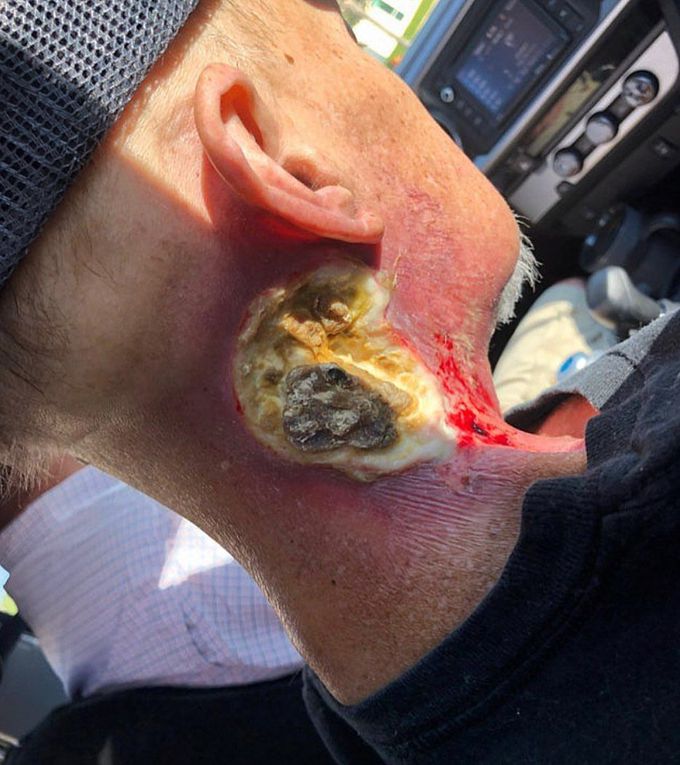


Squamous cell carcinoma
This picture shows squamous cell carcinoma of the head & neck (HNSCC) due to HPV infection, a commonly implicated pathogen in the development of HNSCC, especially in younger populations. Although the most common risk factors are tobacco and alcohol consumption and the incidence of head/neck cancer peaks among older males, HPV has promoted a significant shift towards increased HNSCC rates in young, sexually active non-smokers. Clinical symptoms vary depending on the primary site of the tumor, but a common presenting complaint is ear pain by way of a phenomenon known as referred otalgia, considered to be a red flag in the evaluation of a patient with suspected head and neck malignancy. This occurs because the mucosa of the pharynx, larynx, and other local structures are extensively innervated by cranial nerves [re: CN 5, 7, 9, 10] that also contribute afferent fibers to the external and middle ear, and irritation of the nerves due to growth of the tumor can send pain signals to the ear.
Hemodynamic stimuli&nonhemodynamic stimuliEffects of sugar on teeth

